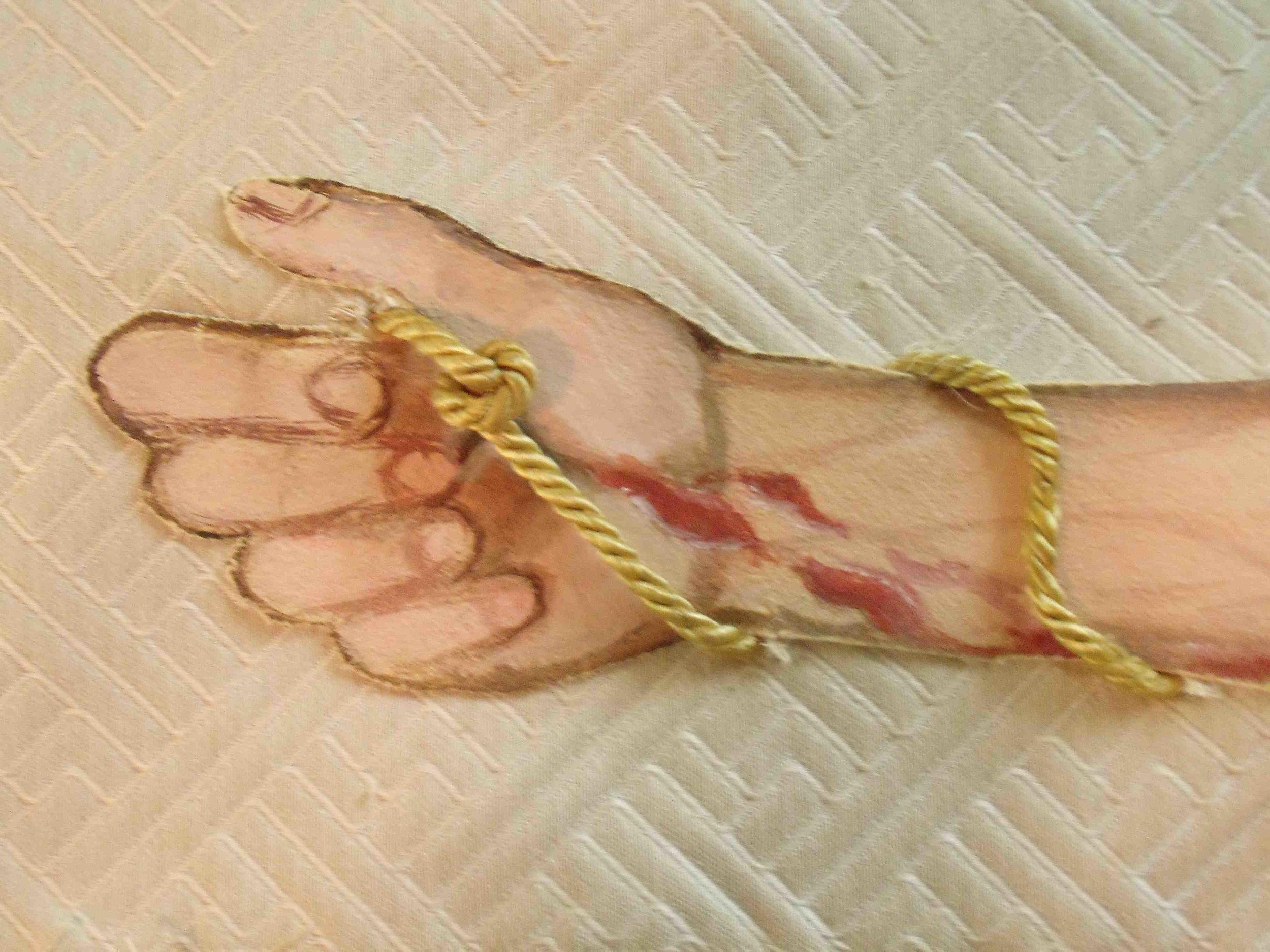One thing about Jasper, he gets his hands dirty. Sometimes he comments about the art he sees and hears, but sometimes he’s got his hands down in it, making something. So sometimes we’ll write about what we’re doing.
So: I’ve been cutting up Jesus. Will I go to hell for this?
I’m working with a collaborative of artists –visual artists, filmmakers, performance artists—on a show called Saint Sebastian: From Martyr to Gay Starlet. The one-night-only gallery show will be Sept. 1 at Friday Cottage Artspace downtown (1830 Henderson). (Yes, we know, we know: same night as First Thursday.) The event was planned in conjunction with SC Gay Pride on Sept 3; the idea was to add an art element to the week of events.

The show, conceived by Alejandro García-Lemos and Leslie Pierce, explores the quirky iconography of Saint Sebastian, martyred twice (the first time didn’t work—Saint Irene pulled all the arrows out), his eyes always raised to heaven but his body writhing across this history of Western art in masochistic ecstasy. How does a Christian martyr become a gay icon? What is it about his story, his image, the representations of his martyred body? (The publicity art—which juxtaposes a male pin-up with stained glass, by Leslie Pierce—captures, I think, some of the weirdness of this icon.)
There’s a great image of Sebastian in the Columbia Museum of Art. The Virgin and Child are pure Byzantine, blue and gold and flat, but Sebastian is looking over the Virgin’s shoulder like the Renaissance, naturalistic, a real body, the cords of his strong neck.
The Sebastian show will include visual art, performance art, photography, film, a small souvenir chapbook of original art and poetry, a DJ, a cash bar, and a couple of boys standing around with arrows.
I’ve been writing poems about Sebastian—some about the image and history, some responding to specific works by the other artists. The interactions and collaborations have been rich and rewarding. (Note to self: there should be more interdisciplinary artist collaborations. Such a great way to generate new work.) A film visually responds to a poem which responds to a print, the film incorporating a voiceover of the poem and the imagery of the print. A photo documents a performance art piece which uses a poem which responds to a print (the poem projected—performance art into film—onto a male body).
I was asked to turn a small room into a poetry chapel. I’ve got icons, prayer cards (with a prayer to Sebastian.) Among other things, I wanted some prayer banners. My partner found some huge folk religious art canvases at a local auction—interesting because the artist was painting traditional Christian images, but clearly had a special interest in the textures of men’s bodies—the veins on arms, the carefully painted chest hair on an apostle. (And that carefully draped loincloth across the fisher of men, looking so like a wardrobe malfunction about to happen, the hand of Jesus so carefully positioned there, as if he’s about to rip it off.)
So for the banners I cut up bodies—Jesus, apostles, thieves on crosses. Something wicked and vaguely erotic about it. Disembodied arms. An arrow (real arrow) in the side. Wrists bound with golden rope. A prayer. “Arms be bound with rope and shame.”
-- Ed Madden


